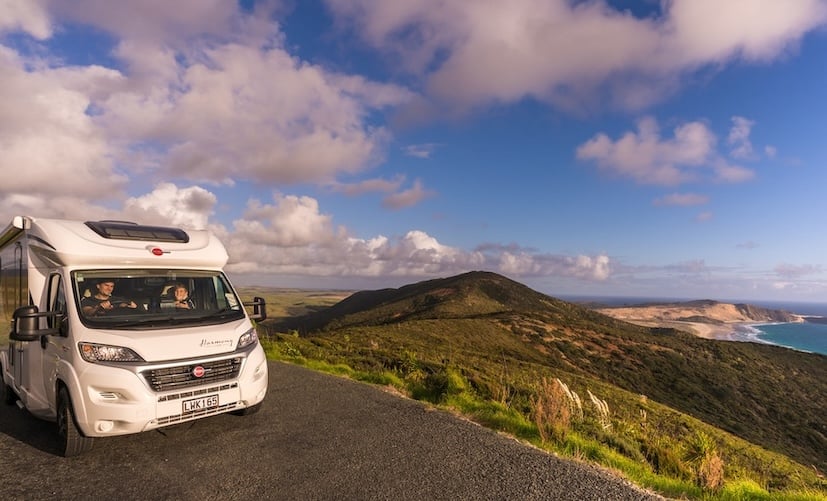
Summer promises long days full of relaxation in New Zealand’s great outdoors — but only if you’ve prepared your motorhome for the holiday season.
The lead-up to Christmas, the New Year and the summer break often gets busy. It can be easy to forget to inspect your motorhome’s tyres or prepare your RV for bugs. However, if something goes wrong on holiday, it may not be an easy fix, can be more expensive and you could even face delays getting the right part.
To ensure that your RV is road ready, we’ve put together this informative blog and downloadable checklist. We highlight safety inspections, maintenance jobs and essential summer items — to help you remember to do all the important pre-summer tasks.
|
Contents • Safety inspections before summer adventuring |
Safety inspections before summer adventuring
Not many things are as exciting as preparing, and then leaving, for a summer road trip. But before you do, it’s important to go over a few safety checks to ensure your motorhome or campervan is ready for travelling over the hotter months.
Manage your diesel fuel
Fuel has a lifespan — so if your motorhome has been sitting idle for part of the year, it’s important to look after it to:
- Prevent degradation — diesel fuel breaks down over time when exposed to oxygen, leading to corrosion, microorganism growth and reduced engine performance
- Avoid engine start-up issues — the engine may be hard to start if it has degraded fuel in its tank, which can lead to battery drain and crankshaft fatigue.
If your tank is near empty, simply top it up with fuel. However, if your tank is full, consider purchasing a fuel stabiliser like Diesel Power. Fuel stabilisers are additives that you can add to your fuel tank. They work by:
- Hindering oxidation — your fuel is blocked from reacting with oxygen which slows down the diesel breakdown process
- Helping to remove water — by preventing water condensation and allowing it to fall to the bottom of your tank where it’s easier to drain
- Inhibiting microbial growth — stabilisers have fungicides and biocides to stop bacteria and algae from growing.
Learn about transmission systems in motorhomes.
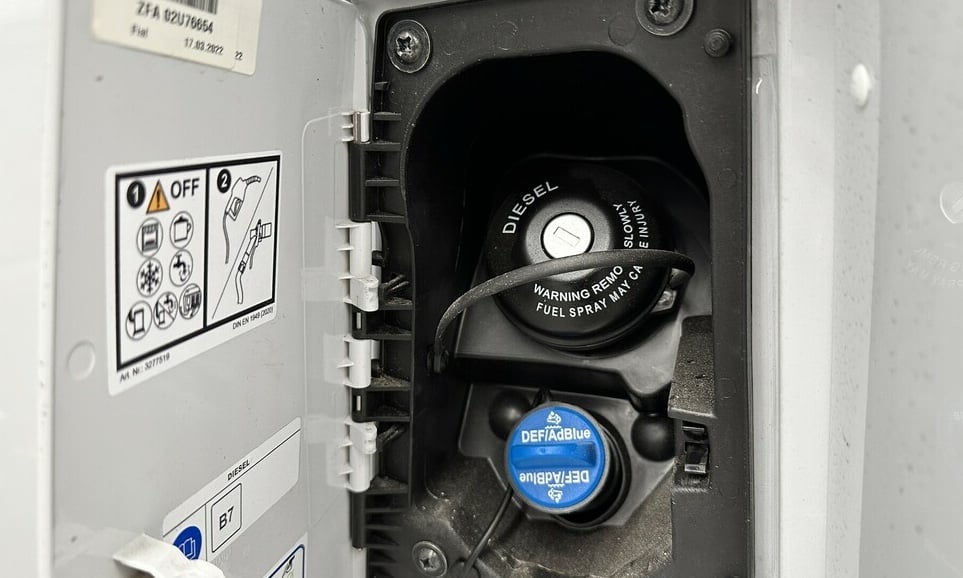
Inspect the motorhome’s tyres
The pressure of your vehicle’s tyres is arguably even more important when that vehicle is a motorhome. Your tyres connect you to the road — and help keep you, and the heavy load you’re carrying, safe.
The heat of summer can be fierce, particularly on a motorhome’s tyres. When inspecting yours prior to a summer escape, be sure to check their:
- Pressure — follow the recommended tyre pressure shown in your user manual or on the front windscreen sticker
- Tread — view the depth as shallow tread depth will lack traction on dry hot roads, leading to skidding and hydroplaning
- Sidewalls — look for cracks, bulges, cuts and even foreign objects like glass on the sidewalls as they can weaken the structure of your tyres
- Age — ensure the tyres aren’t older than seven years by checking the DOT numbers on their sidewalls
- Wheel nuts — make sure they’re tightened to their correct torque setting and that the wheels are rotated annually.
It’s important to regularly check that your tyres are safe rather than waiting for your next warrant or certificate of fitness (WoF or CoF) assessment. By that point, they may already need replacing.
If you’re unsure about any of the above tasks, simply visit your go-to tyre mechanic and voice any concerns.
Check out our blog on maintaining the right motorhome tyre pressure.
|
Hydroplaning isn’t as fun as it sounds Hydroplaning, also called aquaplaning, is when you lose control of braking and steering in wet conditions — and your tyres ride a thin layer of water rather than grip the road. The best way you can prevent hydroplaning towards an accident is by ensuring your motorhome tyres have enough tread and the right pressure. |
Check and repair any rodent damage
If your motorhome is stored over winter, especially outdoors in a field, look for any evidence of rodent misbehaviour. Rats and mice are quite fond of the warmth and potential feast of snacks on offer inside recreational vehicles during the colder months.
You can check whether rodents have been around by:
- Examining outside your motorhome — for droppings, gnaw marks and any signs of entry under the base, through the vents or near the wiring
- Investigating inside your RV — for evidence of nesting or chewing in drawers, cabinets and underfloor spaces
- Checking your motorhome’s electricals — for chewed cables and wires, particularly under the hood and dashboard.
If you do find rodent damage:
- Clean up any dropping and nesting areas — being careful to wear protective gloves so as not to transmit disease
- Look for rodent entry points — then seal these using steel mesh, expanding foam or special rodent-proof barriers
- Repair or replace any damaged electrical wiring — contact an automotive electrician or a motorhome service centre for professional help as safety is paramount.
It’s important to address any rodent damage as soon as possible, and before hitting the road for summer, to ensure your motorhome is both functional and safe.
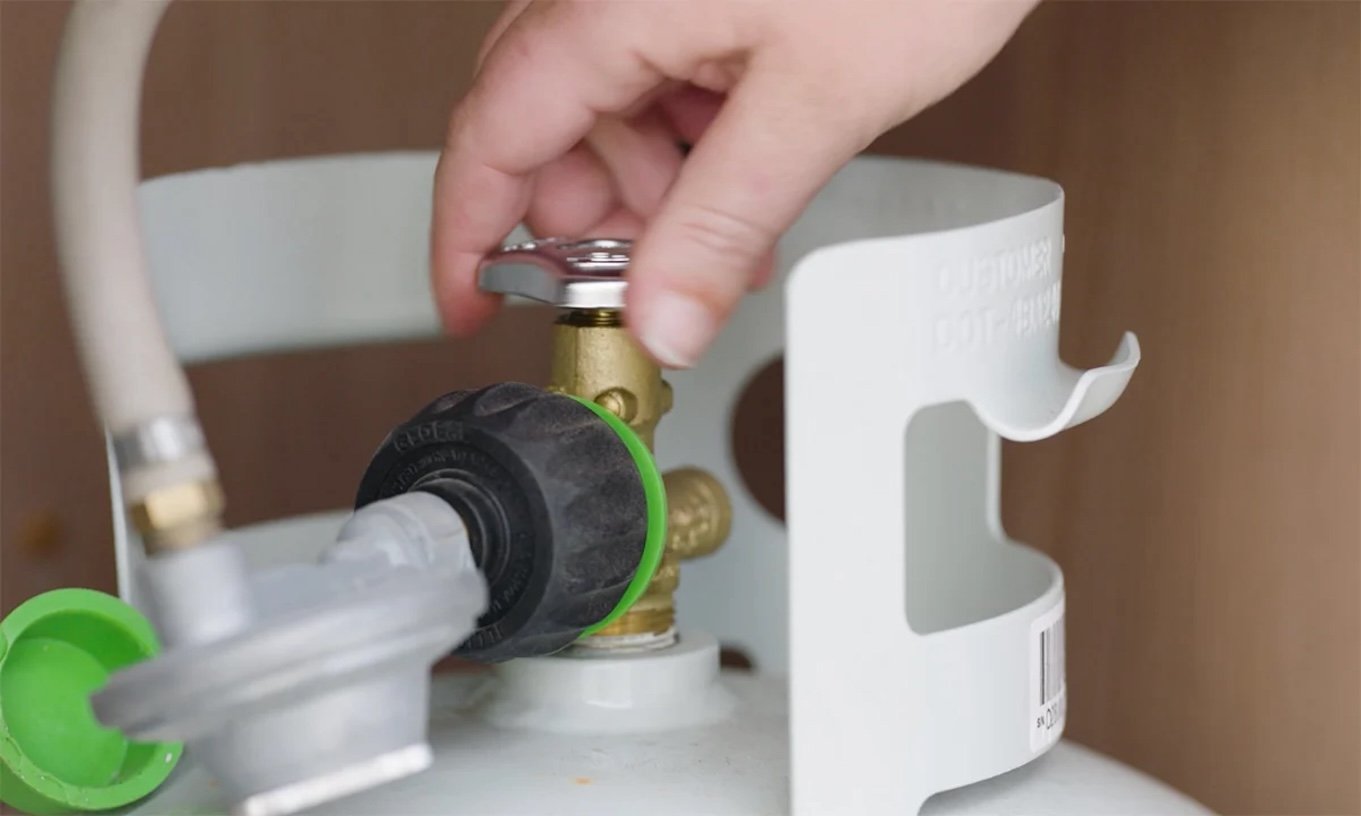
Examine your LPG bottles
LPG gas can be dangerous if not regularly inspected and handled correctly. Some safe practices for ensuring your LPG cylinder is ready to use following a period of storage include:
- Conducting a visual inspection — look for any visible damage, dents or corrosion on your bottle
- Doing a leak test — prepare a soap water solution and apply it around the valve, then slowly open the valve while checking for bubbles and listening for any hissing sounds
- Checking the regulator — whether it’s correctly attached and working properly.
|
How to handle LPG safely Keep in mind when handling LPG bottles that you should always:
|
Find out more about ensuring LPG safety in your motorhome.
Inspect the gas sensors
After you've inspected the gas supply, take a moment to test the functionality of your LPG detectors. Gas sensors are designed to detect any leaks or irregularities in your motorhome’s LPG set up — alerting you to any gas-related issues inside your RV.
Look over your fire extinguisher
Regularly inspect your onboard fire extinguisher to be sure it will work when you’re travelling. Check that the pressure gauge displays the needle within the green zone and be sure the safety pin is in.
Your fire extinguisher should also undergo professional servicing in line with the manufacturer's recommendations — to ensure it remains reliable. This typically involves a careful examination, testing and possible refilling by a certified technician.
Most fire extinguishers have a shelf life of between five and 15 years — depending on the type and the manufacturer.
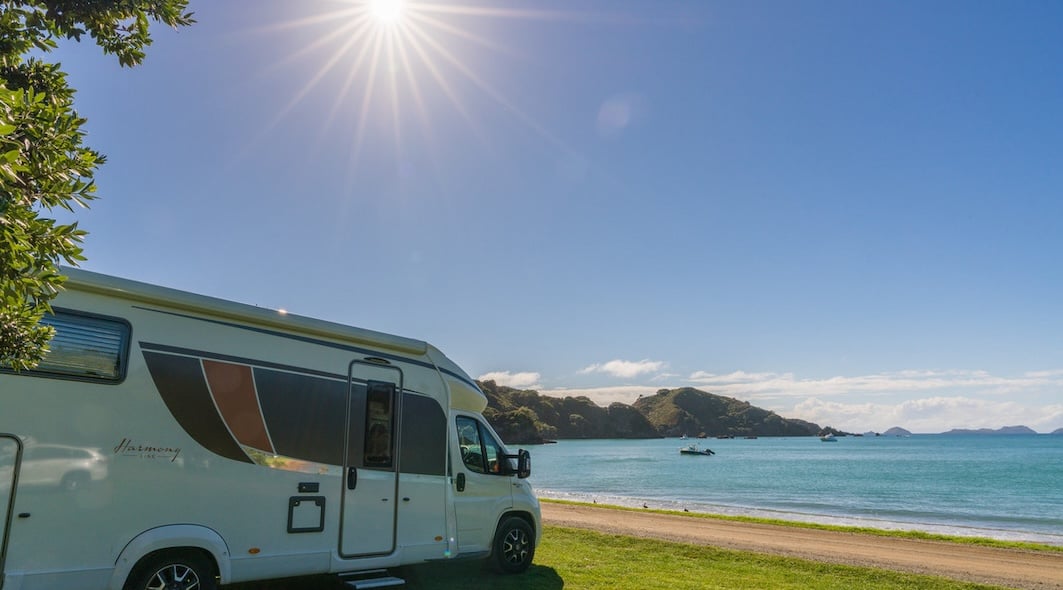
Verify the smoke detectors work
Ensure that your smoke detectors, or combined carbon monoxide and smoke detectors, are operating correctly. They’re an early warning system for detecting a fire in your motorhome, and they significantly increase the chances of surviving a fire with minimal damage to your RV.
To check that your motorhome smoke detectors are working as they should, follow these steps.
- Press the test button — holding it down for a few seconds until you hear a loud beep or an alarm sound.
- Spray a smoke test aerosol — by discharging a quick spray near your smoke detector to test whether it activates the alarm.
- Replace the batteries — it’s generally advisable to change your batteries annually or as instructed by the manufacturer.
- Clean your smoke detector — use a soft brush from time to time, or vacuum any dirt and dust that could be obstructing the device’s sensors.
- Check the alarm — ensuring the sound is loud enough to wake you up if need be.
|
The weight of summer The excitement of summer beach holidays can sometimes lead to filling your motorhome’s garage to its absolute maximum. The danger is if you go over the specified gross weight limit. Be conscious of the items you’re packing — and how much they weigh. |
Sanitise your freshwater tank
Every RV owner wants to enjoy safe drinking and cleaning water while on their travels. However, it’s not something you can just expect to be problem-free. Stagnant water breeds bacteria, mould and algae — which all love the warm, dark and moist environment inside your tank.
Still water in your tanks can also lead to clogged pipes and corrosion.
Sanitise your freshwater tanks by:
- Emptying all the water
- Adding a sanitising solution like CleanOxide Fresh Water Treatment Tablets — designed specifically for motorhome water tanks
- Flushing your tanks thoroughly with cold water
- Refilling with fresh tap water.
Find out more about water storage in motorhomes.
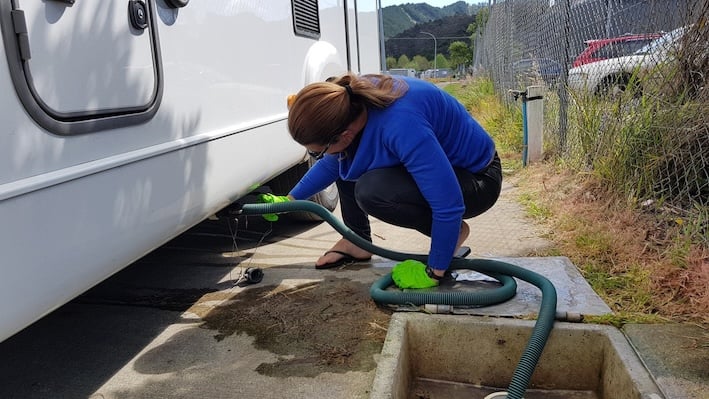
Clean your grey water tank
Do you store your motorhome over the winter months? If so, any small amount of residue left in the grey water tank could smell fairly bad when your RV comes out of hibernation.
To periodically clean your grey water tank, simply:
- Empty its contents down your home drain — or at a designated dump station
- Add a grey water cleaner and odour eliminator down each drain — like Elemonate Grey Water Tank Freshener & Cleaner
- Run your water taps — for a few seconds so the tablets can dissolve
- Enjoy better-smelling drains and a cleaner tank — plus a more pleasant odour all around.
To find out more about managing your grey water, see our motorhome bathrooms and toilets blog.
Check all compliance stickers
It’s important to double-check that your motorhome is meeting New Zealand’s compliance laws before taking off for your summer adventures. Ensure that you have a current:
- Self-contained certificate — to enable you to legally freedom camp around the country
- Registration — which helps road safety, accountability and funding infrastructure
- WoF or CoF — deeming your motorhome road worthy
- Electrical warrant of fitness (eWoF) — signifying that your RV's electrical systems are safe and meet current regulations.
Replace first aid kit items
As summer approaches, it's timely to review your first aid kit. Check that it’s fully stocked and replace any expired items.
Check out our motorhome spring cleaning blog for essential interior and exterior cleaning tasks.
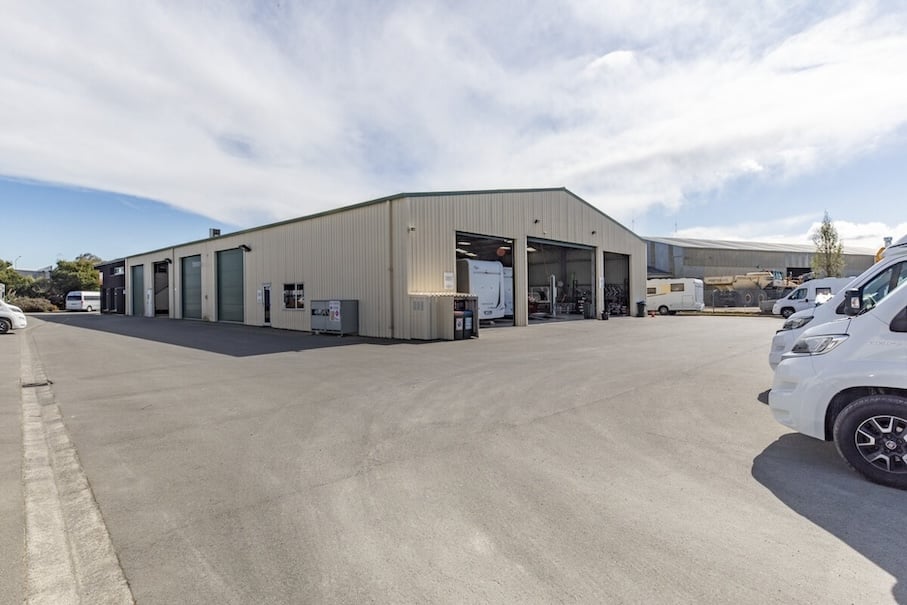
Maintenance jobs to prepare for hotter months
Ensure safe, comfortable and unforgettable summer adventures by checking off these important maintenance tasks prior to hitting the road.
Take a look at your roof
Storing your motorhome out in the open is often the easiest or cheapest option. However, this makes it more prone to the elements. Frost, rain and snow can lead to water getting in — potentially freezing and expanding if your RV is hibernating over winter.
You’ll need to visually check your motorhome’s roof for any signs of damage like cracks, tears, discolouration, rust and warping. Use a ladder to gain enough height so you can examine the roof.
Also, look out for any loose screws and fixtures, and missing sealant — plus any blockages in vents or drainage points.
To find out why it’s wise to protect your RV from the elements when it’s not in use, and what options you have available, see our guide on storing a motorhome in New Zealand.
Check for water entry
Spray water along all your seals and vents, and around any solar panels and satellite dishes. Check around these areas, both internally and externally, to see if any water has entered your motorhome.
|
Saltwater = rust If you spend summer holidays near the beach, be aware of the potential for saltwater to come into contact with your motorhome’s chassis — and saltwater can translate into rust. Consider purchasing a hose end sprayer that will attach to your freshwater hose. You’ll then be able to quickly wash away any saltwater that gets on your motorhome. Alternatively, take your motorhome to a commercial truck washing service where you’ll be able to pay to get the undercarriage power washed. |
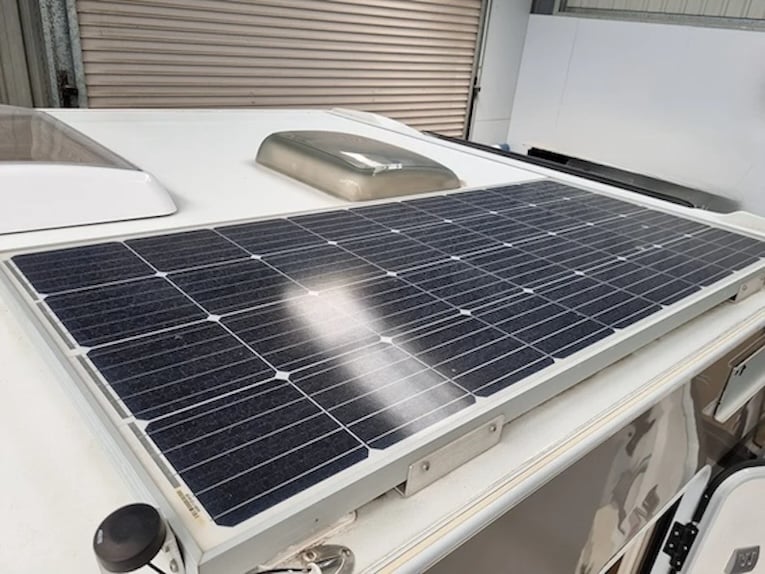
Clean any solar panels
If your motorhome’s solar panel has been undercover over winter, get it out in the fresh air and sunshine.
It’s important to keep your solar panel clean to achieve optimal energy production. To make cleaning it easier, follow these steps.
- Park up in a shady area — avoiding direct sunlight because the heat can make your panel tricky to handle
- Secure a ladder — use a safe, stable ladder with wide feet, keeping it close to your motorhome
- Disconnect the power — prevent any electrical hazards before you start cleaning by disconnecting your solar panel from the motorhome’s battery system
- Clean your solar panel — with a soft-bristled brush or a long-handled sponge, gently removing any dirt, dust and bird waste.
Abrasive scrubbers are best avoided as they may scratch your panel.
It’s best to utilise a garden hose with a gentle spray rather than a high-pressure one. For any stubborn dirt or stains, mix together a mild soap solution with water in a bucket.
Discover the top benefits of motorhome solar panels and what to look for when buying a used motorhome with solar panels.
Protect your paintwork
Ultraviolet (UV) light is strong in New Zealand so like covering your own skin with sunscreen, it’s important to cover your motorhome’s exterior paintwork with a protective layer.
If you feel confident and have a sturdy ladder, look for a wax with UV protection that’s been specifically formulated for boats and motorhomes. Apply the coating at least twice a year — before and after summer.
It’s a fact that recreational vehicles aren’t the easiest things to work around so you may want to consider getting this work carried out by a professional. Our after sales support team can recommend a service professional in your area.
Lubricate rubber seals
Invest in the longevity of your exterior rubber seals by preparing them for the dry heat of the summer sun. Lubricating them has a number of benefits, such as:
- Protecting against drying and cracking — by keeping them flexible, which in turn stops leaks and air drafts
- Reducing sun damage — by creating a protective barrier against UV rays
- Minimising friction — to prevent premature wear and tear.
Choose a lubricant like Thetford Seal Lubricant Spray which is safe to use on all types of rubber. It’s also silicone-based rather than petroleum-based (which damages rubber). Clean your seals beforehand with a mild soap solution and apply the grease in a thin, even coat.
Remember to always test your lubricant on a small part of the seal before applying it to the entire surface.
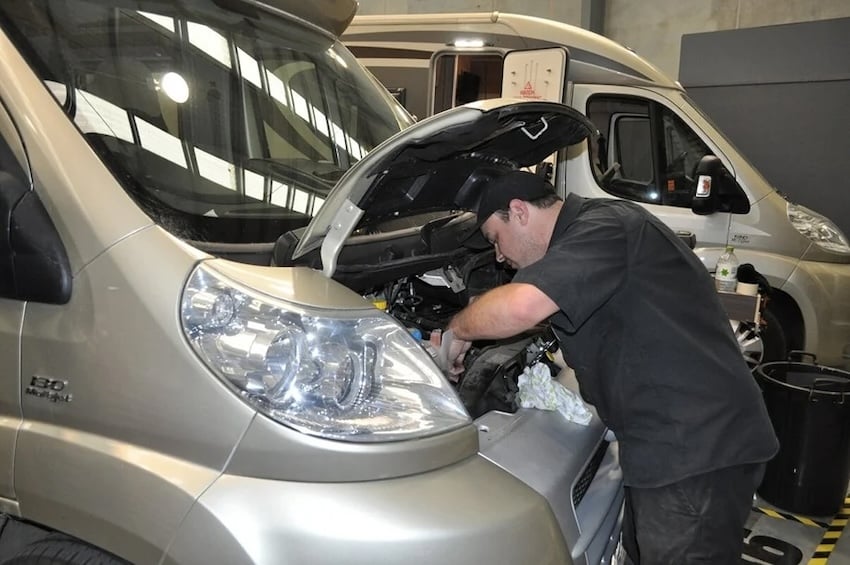
Refill your motorhome’s fluids
Top up your motorhome's essential fluid levels to ensure optimal engine performance. Check that your RV has adequate quantities of:
- Power steering and brake fluid
- Coolant — as specified in your motorhome’s user manual
- Windscreen washer fluid
- Engine and gear oil.
Refer to your motorhome's user manual to determine the recommended frequency for oil changes based on its specific model.
While inspecting under the hood, be vigilant for any signs of leaks in the engine bay — plus any leaks underneath your RV.
|
Break your brakes in before summer If your motorhome was stored during some of the year’s cooler months, be prepared for a slight delay when first braking. Your brake disc rotors may become slightly rusty while in hibernation. To run your brakes back in, simply drive around the block braking a few times and they’ll come right. |
Clean your engine filters
Over time, your motorhome’s engine filters slowly become clogged due to building up dust, dirt and debris. While the filters do their job of trapping these contaminants, they also gradually lose their efficiency.
Coming into summer is an opportune time to clean them out — to prevent them from reducing your engine performance and decreasing your fuel efficiency.
Inspect the house battery
Your motorhome’s house battery powers the electrical components in your recreational vehicle when you can’t access mains power while staying off-grid.
Check the battery terminals for any corrosion and clean them if needed. If your battery is more than three years old, it may be time to replace it — to avoid a situation where it doesn’t work off the grid. If you’re unsure about its condition, get it professionally tested at a workshop.
Once you’re content with the condition of your motorhome’s battery, be sure to:
- Use mains power to fully charge it — for a minimum of 24 hours
- Recharge the battery again — the day before your journey begins.
Find out everything you need to know about charging a motorhome battery.
|
Recharging your house battery Compared to using mains power to recharge the house battery, an external smart charger offers more control and potential for battery rejuvenation — as well as portable convenience. |
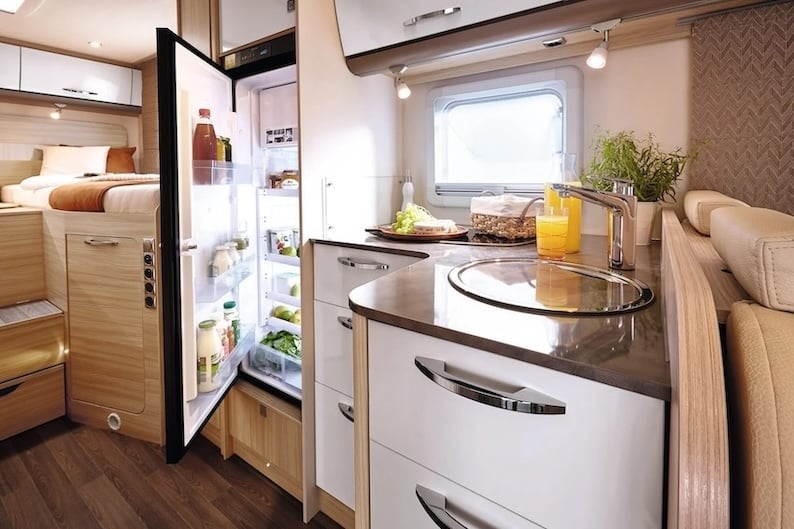
Ready your fridge freezer
Check that your fridge and freezer are keeping cool and working well for the hotter summer season by:
- Thawing the fridge freezer — as frost buildup can hinder airflow and ultimately reduce your appliance’s efficiency
- Using a torch light inside — to see if your fridge’s seals are still well sealed.
The night before you begin your summer motorhome vacation, pre-cool your fridge freezer overnight to optimise its temperature.
Read our guide to motorhome fridges and coolers and find out more about how to keep food and drinks cold in your motorhome.
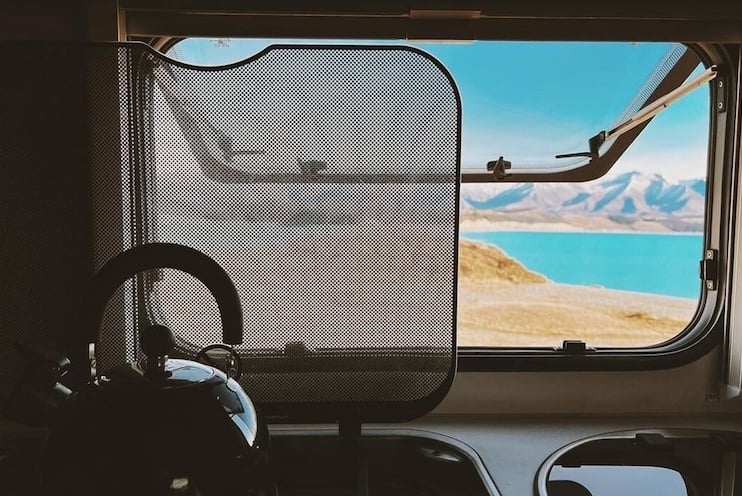
Prepare your motorhome for bugs
Swatters, nets, candles or traps. Whichever tools you decide to use to reduce the annoyance of insects onboard your motorhome, have at least one at the ready.
A battery-powered electric fly swatter can be a simple yet effective device for removing flies and mosquitoes from your motorhome’s interior. Citronella candles can also be effective against mozzies. Electric or sticky fly traps will attract any flies that enter your motorhome.
For crawling insects like spiders and ants, buy specific traps targeting them and place those traps along known trails or entry points.
If you don’t have insect screens covering your motorhome’s windows and vents, consider getting them installed. If you already have them in place, be sure to check each screen for any gaps. Upon finding any holes, patch them up using a product like Permastik Black Fly Screen Repair Tape.
|
Prevention is the best cure Use your motorhome’s insect screens when opening windows and vents. Half of the job of controlling bugs is done if you keep them out in the first place. |
Try your lights and indicators
Check the functionality of your indicators and all your lights. Have someone sit in the driver’s seat while you inspect each light from the exterior to ensure they’re all operational.
Test your awning
One sunny day before your summer adventures begin, open up your awning in the fresh air. Check it for any damage, make sure it’s secure and spray a lubricant over any moving parts to keep it operating effortlessly.
Clean your awning with a mild soap solution in water — but give it time to dry completely before you close it up again.
Take a look at our motorhome winter preparation blog for maintenance and safety tips before travelling in the colder months.
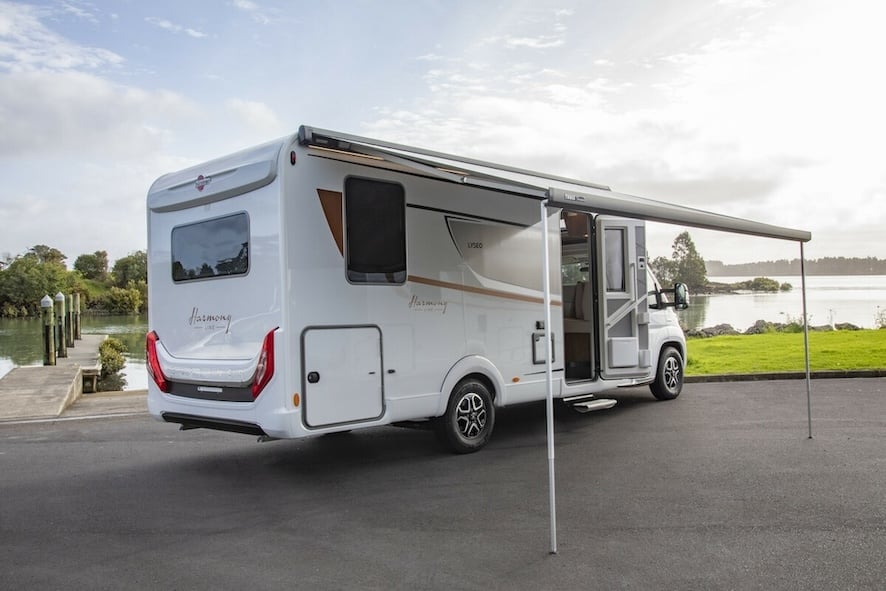
Essential summer motorhome items
Summer can be hot and uncomfortable so take items that will help cool you down and make the heat more manageable.
Windscreen heat reflective covers
The higher temperatures and humidity of summertime call for methods to help keep the heat out of your motorhome. A simple solution for your front window is to carry a heat-reflective cover that reflects intense sunlight and heat off your motorhome’s windscreen.
|
Remember your roof vents Roof vents demonstrate their usefulness in the heart of summer — when cooling down the interior may be your number one priority. Be sure to close and secure your motorhome roof vents before driving to prevent them from coming loose. |
Swimwear
It wouldn’t be summer without packing togs and bathing suits to take refreshing dips in nearby lakes, rivers and the ocean.
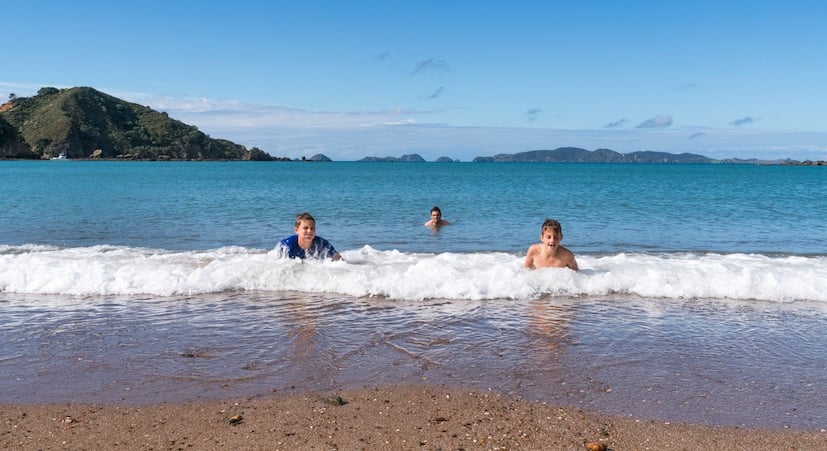
Sunhat and sunscreen
New Zealand is a country highly exposed to UV rays — so it makes smart sense to cover up where you can to avoid getting burnt. The easiest and most effective measures you can take to protect yourself are to:
- Wear a wide-brimmed hat
- Keep a T-shirt or top on when not swimming
- Cover your exposed skin with sunscreen.
Portable fan
Consider taking a small portable fan onboard with you — though be aware of how much house battery power it requires when you’re camping off-the-grid.
Alternatively, it may be more effective to simply open the motorhome’s windows to let a cool breeze through. Just be sure to secure your insect screens as bugs love cool, shady spots just like your motorhome.
Learn how to monitor your motorhome while on the road.
Be ready for your summer road adventures before the heat arrives. Download our summer road trip checklist to easily check off each task.


